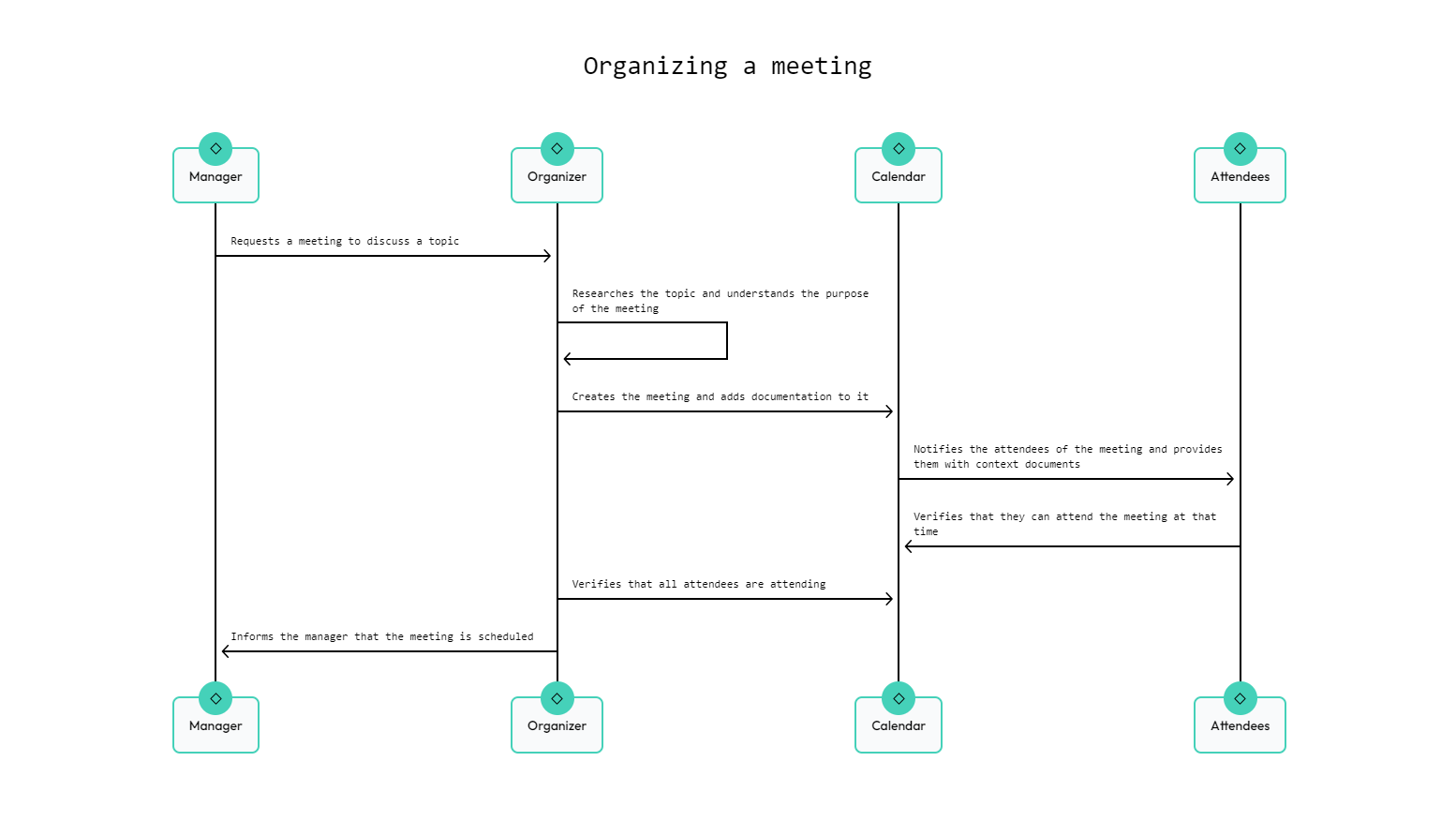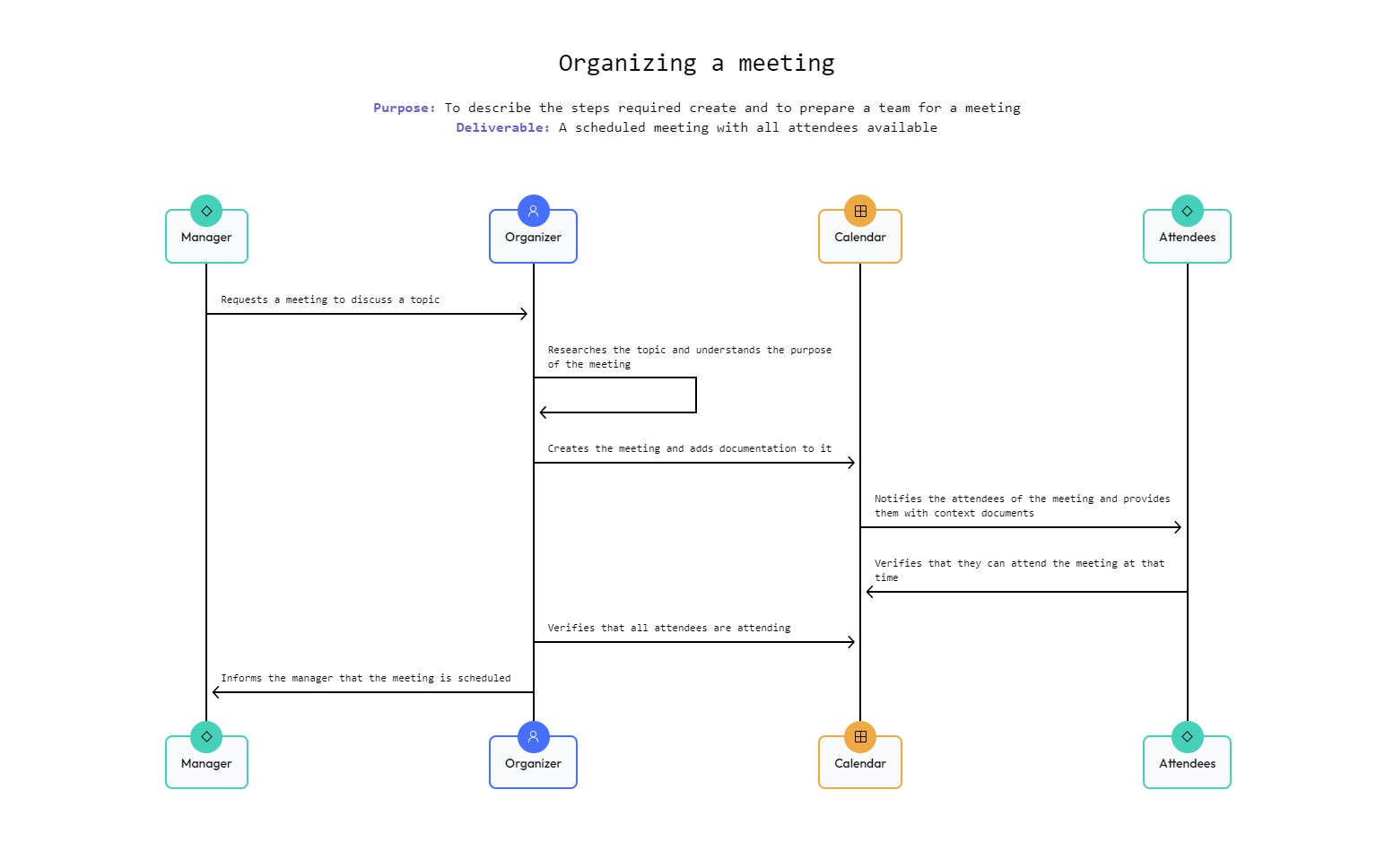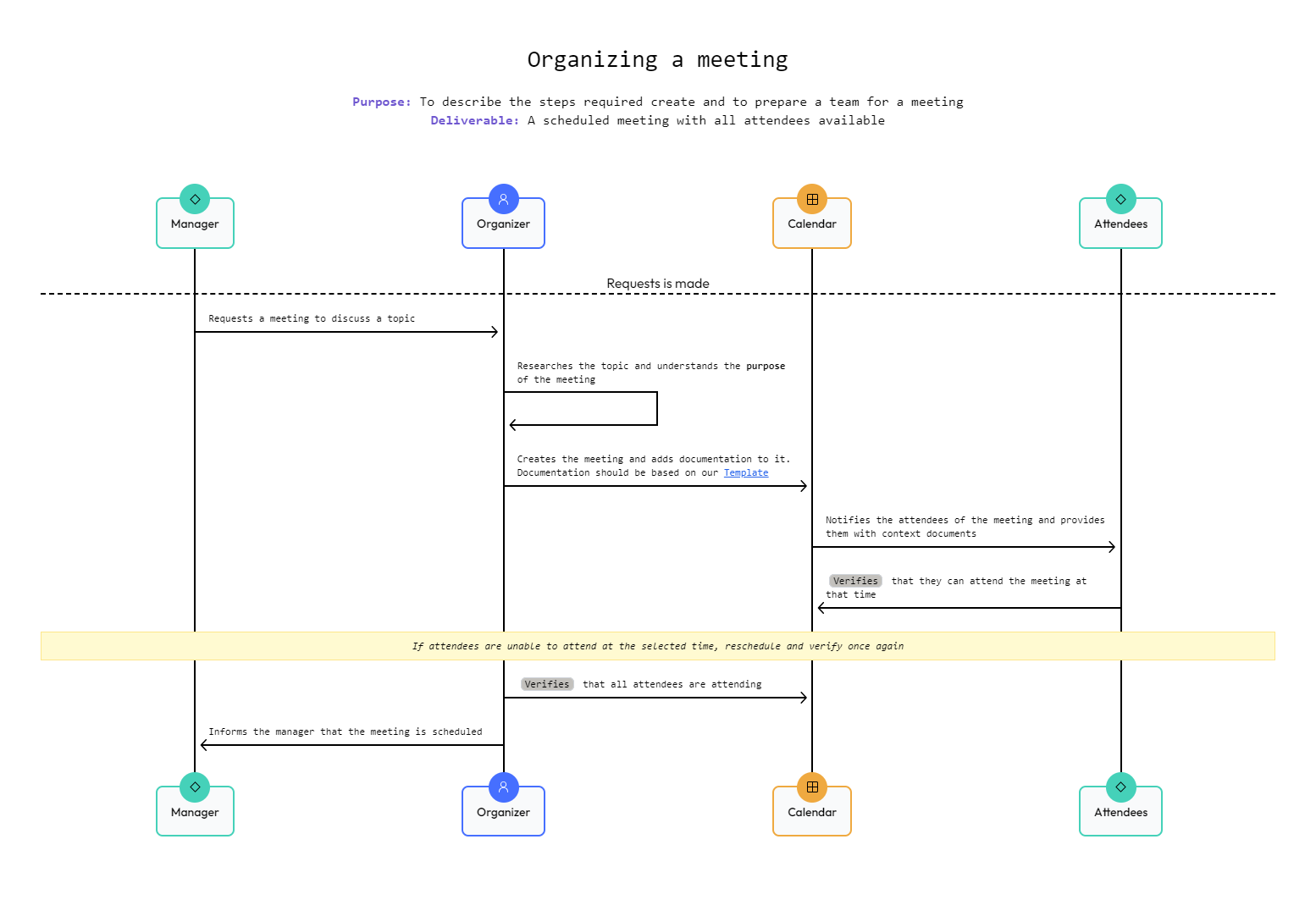Creating a Sequence
Creating a Sequence
Once you have chosen the type of sequence you want, and generated it if needed, now you need to be able to modify it sequence to fit your own needs. In order to achieve the highest level of quality in a sequence, it is important to understand the core elements of a sequence and how to precisely control the sequence diagram to best communicate the information needed.
Essentials of a Sequence
There are only 2 key elements needed for a minimum sequence.
- Title
- Messages
Let's apply these requirements and create an actual sequence using them.

With just these elements, a sequence can convey the minimum required information to effectively demonstrate a sequence of events. However, a better sequence provides more information for the user to understand the sequence.
Adding context to a Sequence
A good sequence provides more than just the minimum required information. The previous sequence is still lacking a lot of information, and is not very useful yet. To improve upon this sequence, we should add context to it. These elements will help us with this:
- Purpose
- Deliverable
- Components
Let's apply these elements to our sequence.

By including a purpose and deliverable, the sequence will have an immediate context available for a viewer. This way, any user who sees the sequence can immediately understand why the sequence exits, and what it is supposed to achieve. This added context will make it much easier for a viewer to understand not just the content of the sequence, but it's application as well.
Additionally, adding component declarations will also greatly help in contextualizing a component's role in the sequence. Declaring a component's type can greatly inform the viewer of it's purpose in the sequence. Declaring actors and labeling them with users or roles will make the responsibility of each step in the sequence much clearer as well.
Formatting and organizing a Sequence
Beyond this added context, it is also important to ensure that the information contained in a sequence is provided in a logical and easy to understand way. The best sequences will not only include the minimum requirements and the surrounding contexts, but will also utilize SequenceStack's formatting options to organize the information in the sequence into distinct sections. This organization should add more context to each section of the sequence, and make the seperation of each portion of the sequence more obvious and easier to understand.
To do this, we should apply these formatting tools to the sequence:
Now let's apply these additions to the sequence.

While a more basic seqence can convey the basic info of what happens in a sequence, adding these elements to a sequence greatly improve the utility of a sequence by making it's purpose and the roles needed for it to operate much more clear and open.
That clarity is the core of a good sequence. SequenceStack exists to reveal these hidden or unspoken elements of a sequence of events that are needed for important proccesses to complete. By exposing more information in a more more expicit way, the sequences underlining these proccesses can be more easily understood, operated, and improved upon.